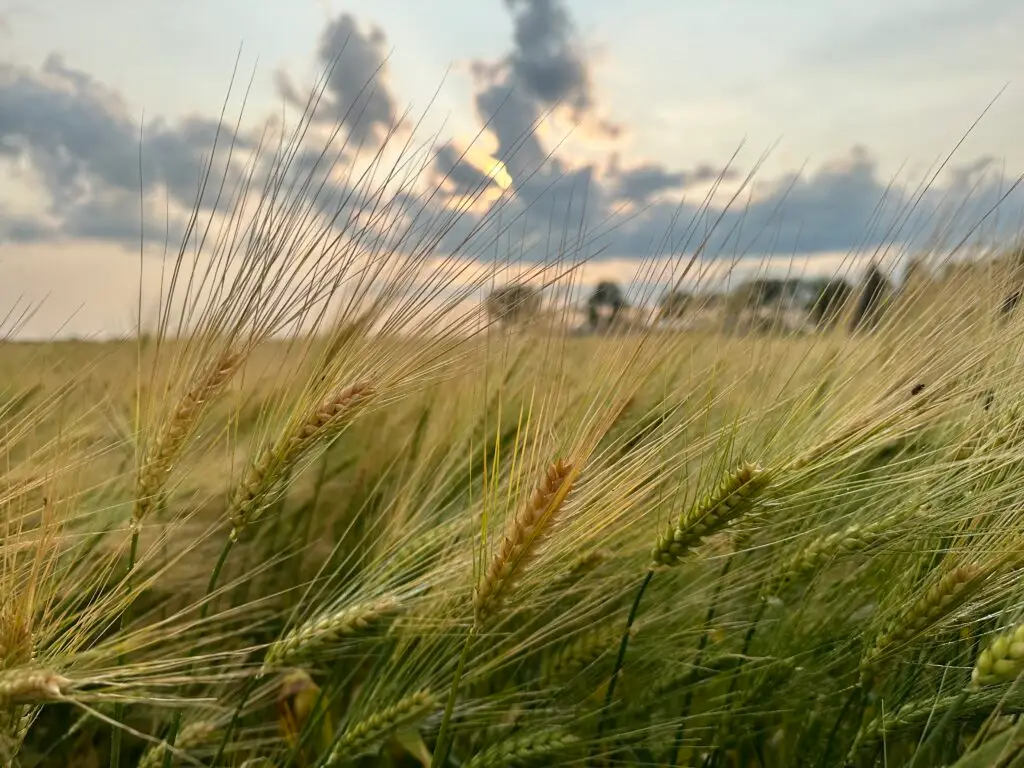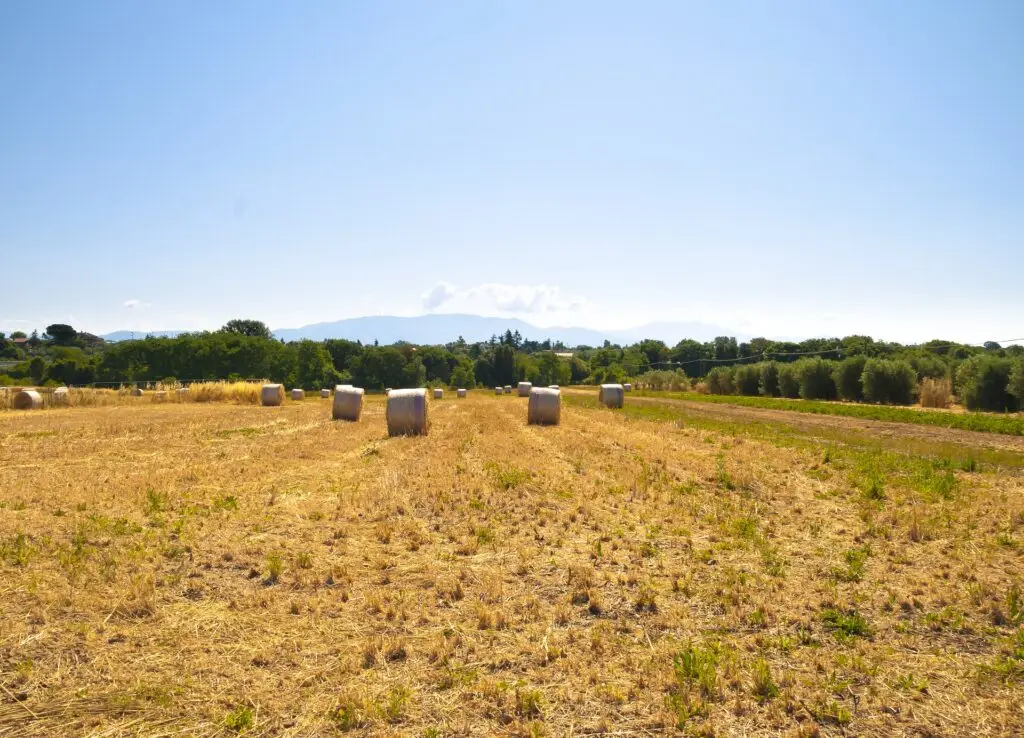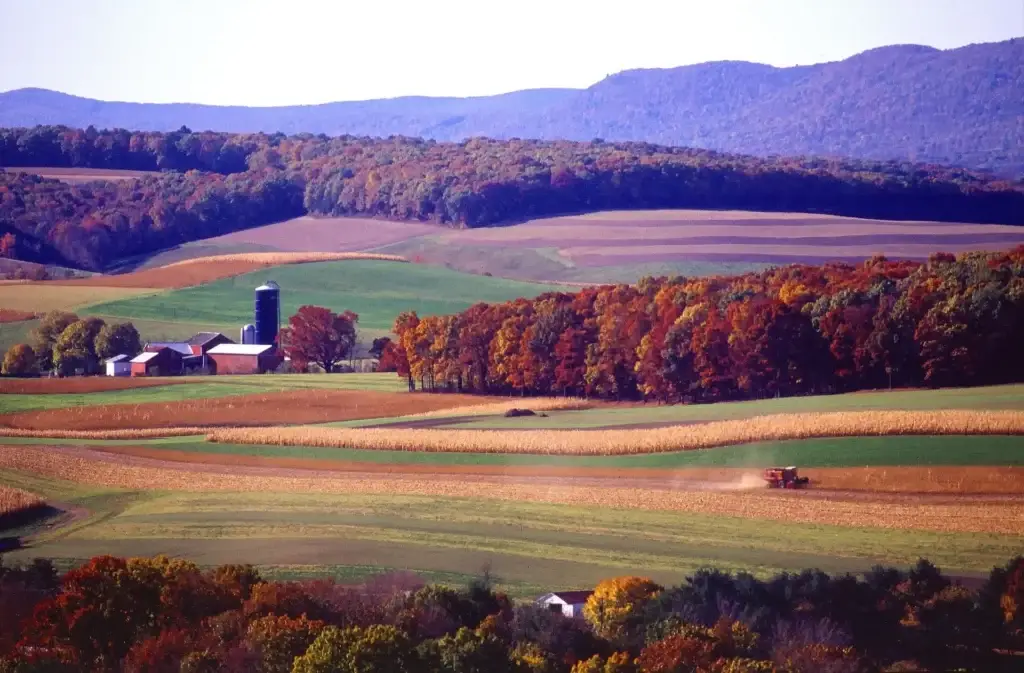Identifying Strategies to Maximize Potential and Minimize Risk

Business strategies are practical actions that communicate how a business plans to reach its goals. Thinking strategically about the farm business as a whole helps determine emerging themes, issues, patterns, and opportunities. This allows for proactive management and helps maintain more control over what happens to the farm. Goals are of little value if there is no tactical plan for achievement and no implementation with ongoing monitoring and adjustment opportunities. Develop three business goals Each farm should develop at least three business goals. These are the basis of the farm planning process and should be kept in mind when decisions are being made. Once developed, use them to determine how you get to where you want (and need) to go. This begins by assessing the current farm situation and focusing on worthwhile issues to address. Complete a SWOT Analysis SWOT analysis, a process to determine strengths, weaknesses, opportunities and threats, is one way to establish where you are now and what you have to work with. It helps establish benchmarks for the farm’s current situation so that there is something to measure against moving forward to see if the farm is moving in the right direction. This process also helps you identify strategies to get there. To conduct a SWOT analysis, the farm leadership team identifies internal strengths and weaknesses and external factors that affect opportunities and threats to the business. The objective of this process is to capitalize on strengths and eliminate or minimize the impact of weakness. It is a profit-seeking and risk mitigation tool. Identifying internal strengths and weaknesses The first step to a SWOT is to identify internal strengths and weaknesses of the farm. The strengths are those that give an advantage or opportunity and weaknesses those that stand in the way or limit what the farm can do. Use this as an opportunity to reach out to people within and outside the farm to have a casual conversation about what the farm does well and what it could improve on. Gather feedback on others’ perceptions, and compile industry benchmarks to measure the farm against. It is helpful to rank these in terms of their level of importance to your operation’s competitive advantage. It is also worth looking at how the business has performed in the past (during good times and bad). Look at the financial analysis measures from the last five years, how business decisions are made, and how the farm has been managed. This is the time for an honest self-appraisal. Recognizing external opportunities and threats The second step in a SWOT is to look at external opportunities and threats to the farm. This includes the general condition of the economy (and how it affects the business), input and commodity prices (and trends), federal and state rules and regulations, industry trends and changes, and competition. Creating strategies or action steps The final step and most important part are pulling it all together. Creating a list does not do any good unless it is put to work. Use the SWOT to create strategies or action steps to address opportunities and threats by taking advantage of strengths and minimizing or eliminating the impact of weaknesses. A helpful way to do this is to look for the intersections of strengths, weaknesses, opportunities, and threats in order to maximize potential and mitigate risk. Identify opportunity-strength strategies, opportunity-weakness strategies, threat-strength strategies, and threat-weakness strategies. Strategies that show up more than once might be areas to focus on and prioritize higher.A comprehensive SWOT analysis helps a farm acknowledge and be responsive to opportunities and threats in the current business environment. The business strategies derived from the SWOT should be realistic actions that help the farm reach its goals. Spending time developing goals and strategies, helps a farm adapt nimbly in a changing environment and make proactive business decisions. Getting Started with the SWOT Matrix and Strategy Analysis: Use the worksheet in the Cultivating Your Farm’s Future workbook to analyze the internal and external factors affecting the farm business by identifying strengths, weaknesses, opportunities, and threats and using them to identify strategies to help reach your goal/vision for the future. Additional Resources: “Cultivating Your Farm’s Future” workbook and companion guide. This workbook contains invaluable tools to help with your farm’s succession planning. “Cultivating Continuity“ the companion guide to Cultivating Your Farm’s Future features additional resources. Authors
Farm Asset Division: A 21st-Century Conundrum

The best way to divide farm assets is a challenge that farm families face with each generation of owners. As a parent, we strive to treat and love our children equally, and we want them to know that we love them all the same. When our children perceive their inheritance as a direct indicator of how much we loved them, it makes dividing farm assets a daunting task. The fear of upsetting one’s children often causes parents to divide farm and family assets equally among all heirs. However, it can be beneficial to look at farm and family assets separately when dividing the estate. Long-term viability for the farm, financial security for the founding generation, and continued family ownership of the farm are documented goals of many farmers1. Research from the Farm Business Institute indicated that family-owned and operated businesses have roughly a 30% success rate in transferring the assets and control from the founding generation to the second generation2. Failure to transfer the business is often caused by a lack or avoidance of planning from the owner generation. This results in the implementation of the state’s succession plan which divides the assets equally among the heirs. Oklahoma State University has created a statistical model that compares various transition strategies and their probabilities of success. The results demonstrate that the most common farm succession strategy of dividing the assets equally among all heirs has the lowest success rate. Farms employing this strategy normally do not continue to the next generation3. Distributive Justice Principles When the owner generation makes decisions concerning farm succession, they are subconsciously considering three principles4: (see What is the biggest threat article for further information) Equality principle: assets are divided equally among heirs regardless of their contributions Proportional equity principle: distribution of assets is in proportion to the heir’s contribution in maintaining or growing the asset Needs-based principle: the heirs’ needs are given primary consideration Research has shown us that the equality principle does not help us reach our goal of transferring the assets and control to the second generation. Therefore, let us delve deeper into the proportional equity principle and needs-based principle3. Proportional Equity Principle of Distribution Proportional equity distribution relies on an accurate accounting of the heirs’ contributions. Contributions can be defined as money, labor, management, providing care and maintenance on the home and facilities, mechanical repairs, or being a caregiver that allows the aging parents to stay in their home, etc. There are several questions to consider when dividing farm assets based on proportional equity. When do the contributions start? Does it begin when the heir becomes an adult and makes a conscious choice to continue providing labor? Or is childhood labor also considered? Are the on-farm heirs compensated at a fair market price for their labor? Or are they receiving below-market wages with a promise of “making things right” with inheritance? Is this arrangement documented? Are the on-farm heirs adding value to the farm with their labor and management? Is the owner generation growing the business because they know they have consistent labor and additional management? Would this growth happen without the on-farm heirs, and should they be given credit in some way for this increase in wealth? Are the on-farm heirs helping preserve the farm’s wealth by maintaining the asset base? If they weren’t there, would the owner generation keep the business operating at the same level? Are the on-farm heirs helping their parents age in place? Are they providing services to the owner generation that would otherwise be an out-of-pocket expense and deplete the asset base? To help us visualize equality vs proportional equity distribution, let’s look at an example from John Baker, Iowa State University and Dave Goeller from the University of Nebraska. In this example, we will use an example farm that has one person in the owner generation and three heirs. Two of the heirs are off-farm and do not contribute to the farm. The on-farm heir joined the farm in 2000, and we are crediting 50% of the farm’s growth in net worth to the labor and management contributions of this heir. For this example: The farm’s net worth in 2000 is $600,000 The farm’s net worth in 2020 is $3,600,000 What will the distribution of the farm net worth look like using the equality principle? Using the equality principle, each heir would receive ⅓ of the farm’s 2020 net worth. $3,600,000 divided three ways leaves $1,200,000 for each heir regardless of their contributions to the farm. What will the distribution of the farm net worth look like using the proportional equity principle? Using the proportional equity principle, we would divide the original 2000 net worth equally among the three heirs. The net worth at this time is solely due to the contributions of the owner generation. This gives us a distribution of $200,000 per heir. We would then consider the change in net worth from 2000-2020 and determine how much of the change was due to the on-farm heir. The change in net worth is $3,000,000 with the on-farm heir being responsible for 50% of that growth, or $1,500,000. The owner generation’s portion of the net worth is divided equally amongst the three heirs. This $500,000 is added to the $200,000 from the 2020 net worth resulting in each off-farm heir receiving $700,000. The on-farm heir received $700,000 plus the $1,500,000 for a total of $2,200,000. While this division is not equal, it is equitable and provides the on-farm heir with compensation for their contributions and increases the likelihood of keeping the farm business viable and in the family. Each farm will value the contributions of the on farm heir differently. The questions posed above can help you determine what this will look like for your farm. We recognize that this was a simplified example but hope it helps give you a place to start thinking about what proportional equity may look like on your farm. Remember, you may need to treat each
Fair vs. Equal Strategies for Asset Distribution

Recent farm succession research by UW-Madison Division of Extension educators indicates that the division of assets for inheritance is a common tension around farm succession planning. This study found that 54% of participants felt stress over how assets were divided. The participants’ comments regarding this stress were grouped into five main categories, business risk, sibling harmony, emotions, personal risk, and treating assets strictly as inheritance and not as business assets. In some cases, the tension can be so great that the owner generation avoids making a decision until it’s too late which may allow their assets to default to the state’s plan, which typically mandates dividing the assets equally between the children. If the goal is to continue the farm to the next generation, dividing the assets equally may jeopardize that. Oklahoma State University has created a statistical model that compares various transition strategies and their probabilities of success. The results demonstrate that the most common farm succession strategy of dividing the assets equally among all heirs has the lowest success rate. Farms employing this strategy normally do not continue to the next generation 1. Making decisions and following through with them can alleviate the successor’s worry about their financial ability to purchase the farm assets. Having a succession plan allows the successor to prepare for ownership of the farm assets, whether it is through inheritance, purchase, lifetime gifting, or a combination of the three. Solidifying the owner generation’s goals and priorities for their retirement needs and estate plan, allows them to better communicate these goals to the heirs and/or business successors. Service providers, such as attorneys, accountants or other professionals can use these goals to tailor their suggestions and strategies to better fit the needs of the family. An overview of the following tools and strategies is provided to help owners and successors become familiar with these options before meeting with planning professionals. Familiarity with these tools and strategies will give owners and successors a better understanding of the strategies as they discuss them with professionals. Farm families may want to consider a combination of these strategies to fit their unique asset distribution needs. Unequal Gifts of Essential Business Property Owners of the farm business may choose to transfer the essential assets of the business to the on-farm heir. These assets may include livestock, machinery and equipment, tools, and buildings that are critical to the business. For a business to survive, these things may need to be passed on to the business heir even if this means the business heir inherits a larger percentage of the parent’s assets. Estate planning tools (Wills, Trusts, and ownership of property) Wills are a set of instructions for the distribution of assets at the time of death. Wills are easily changed, and assets distributed through a will are subject to probate. Probate is the court process of validating the will. The instructions in the will can distribute assets however the owner deems appropriate and can set parameters for the purchase of assets between heirs. Parameters could include a set price, a formula for a price, and an interest rate if a purchase is done over time like a land contract. The instructions may also include that assets be available for the on-farm heir to rent for a set period of time. A trust is a legal entity that has the power to hold assets. Trustees and beneficiaries need to be identified for each trust that is created. A set of instructions would be developed outlining who makes decisions for the assets and who receives the assets or the benefits generated by the assets after the owners pass. Assets in a trust are not subject to probate, unlike assets that are transferred by a will or by the state’s default plan. Depending on the type of trust, the date the trust was implemented, and the trustees and beneficiaries chosen, a trust may provide some protection against Medicaid Recovery in Wisconsin. Any assets moved to a trust would still be subject to the Medicaid programs “look back” period or may still be considered the owners’ assets, despite being held in the trust name. For more information about Medicaid Recovery visit: https://www.dhs.wisconsin.gov/medicaid/erp.htm and https://www.pa.gov/en/agencies/dhs/resources/medicaid/medicaid-general-eligibility.html The way the property is owned or titled may have a bearing on how it is distributed. For example, if property is owned as tenancy in common, and one of the owners dies, the deceased’s interest is transferred to his/her heirs. Joint tenancy exists when two or more persons own the entire property with the right of survivorship. This means that at the death of one joint tenant, his or her interest passes directly to the surviving joint tenant(s). It does not become a part of the decedent’s probate estate. Therefore, it cannot be controlled by his or her will and is not subject to creditors’ claims against the estate. The last surviving joint tenant becomes the sole owner of the property2. If one is unsure of how property is titled and owned, a consult with an attorney can be helpful. Business Entities as Transfer Vehicles Corporations, limited liability companies (LLCs), and limited partnerships may be an option to transfer business assets to the on-farm heirs. The assets in the entity could be transferred to the successor over time allowing the owner and successor to co-own the entity. The transfer of ownership could be achieved by selling shares of the entity in the case of corporations or interest or units in the case of LLCs. The owner could choose to gift ownership of shares, interests, or units to the successor. The purchasing or gifting of shares, interests, or units guarantees the essential business assets are in the appropriate hands. The entity can also have language in the operating agreement or legal documents as to how the owners’ shares or interest are to be transferred at death. It is important to consult with an accountant or tax professional regarding gifting and sales transactions that may have tax consequences. Purchasing Agreements There are many different types of
Court Decision Splitting Up Family Farm Reversed: When Farm Succession Planning Fails

The article is not a substitute for legal advice. Farm succession planning can be a complicated process for many farm families. A decision out of Minnesota involving a farm dairy’s succession plan highlights what can go wrong when farm families do not handle the situation. The parents had three children, and one child had moved back to take over the farm. The parents placed the farmland into a revocable trust with each child as a beneficiary to the trust. The trust allowed the three children to co-own the property and granted one owner the ability to petition the court to partition (divide up) the property. This case highlights why farm families should develop plans to enable the child(ren) who want to continue the farm the ability to sustain the farm but at the same time be equitable to the non-farm heirs. Background The Neumanns operated a dairy farm consisting of two parcels of land. In 1995, the Neumanns conveyed their two parcels of farmland into a revocable trust, with the couple’s three children as beneficiaries of this trust. In 2004, a daughter (Pronschinske) and her family purchased the Neumanns’ dairy herd and leased both parcels of farmland. Pronchinske and her family moved a mobile home on the farm and converted the dairy into an organic operation. Mr. Neumann passed away in 2008. In 2009, Pronchinske and Mrs. Neumann entered into a written lease for the farmland, with both parties agreeing that the value of capital improvements Pronchinske had made would apply to the purchase price of the farm in the future, or alternatively, Pronchinske would be compensated for the cost of capital improvements. Mrs. Neumann died in 2012, and the three children became co-tenants in the farmland with equal undivided interests. In 2015, one of the Neumann children commenced a partition action against his siblings, Pronchinske and Anderson. A partition action is when the court divides a common property among its co-owners or requires the property to be sold and the money divided among the co-owners. Minnesota law requires that referees be appointed in such cases to determine how the property should be divided. Referees are disinterested parties who interview the parties involved in a partition suit, view the property, inspect as needed, and recommend to the court how to handle the partition suit. The three children in this case agreed on the appointment of two referees. In late 2016, the referees issued a report to the district court. In the report, the parties all agreed to 1) use a 2012 appraisal and 2) that the property could not divide without great prejudice to Pronchinske who wished to continue operating the farm after making substantial improvements. The referees recommended that the court award Pronchinske both parcels of farmland with a credit of $119,000 in capital improvements and pay $387,667 to her two siblings. The district court sent the report back to the referees to clarify what “great prejudice” towards Pronchinske in the report meant. In 2017, the district court granted a motion to set aside the report, finding that the report was only advisory and not binding on the district court. The district court also found that there was no evidence of great prejudice to all the owners, just Pronchinske. The district court concluded to divide the farmland into equal thirds to the three children. Pronchinske appealed that ruling. Court of Appeals Opinion On appeal, the court had to determine how much deference the referees’ report was owed. Legal scholars had previously written that deference should be given to the written report unless the referees made a procedural error that adversely affected the rights of one of the parties. If the court does set aside a report, then the court needs to refer back to the referees or appoint new referees. The court determined that the district court should have deferred to the referees’ report. In reviewing the report, the district court erred in not deferring to the referees’ report. Reviewing the referees’ report, the court determined that one sibling viewed allowing Pronchinske to buy the property as a forced private sale and preferred the property be put up for public auction. The other siblings were not in favor of a public auction. All this demonstrated to the court that the district court had erred in not properly deferring to the referees’ report. The court reversed the district court’s decision, although this ruling may not be the final word on this decision. Why Care? The parents in this case made a decision many farm families make; they decided to treat each kid fairly by giving each an equal share of the parent’s estate. Dividing assets equally, however, is not always fair to the one child who may still be running the farm. Talking to your family and developing a plan that is fair but still allows the one sibling to continue on the farm is your better choice. As this case highlights, a revocable trust giving equal rights to all the siblings is probably not the right method to reach a result that allowed Pronchinske to continue to operate the farm. Imagine how you would feel if you are Pronchinske. You have built up a farm, built a home on the farmland, and are now potentially going to see two-thirds of your farmland sold with no guarantee you will be the highest bidder. Developing a farm succession plan allowing Pronchinske to continue operating the farm while treating the other two siblings fairly would have been a better way to work this out. Developing your farm succession plan can prevent problems and potentially save family relationships after you are gone. References Neumann v. Anderson, A17-1450, 2018 WL 1997090 (Minn. Ct. App. April 30, 2018).